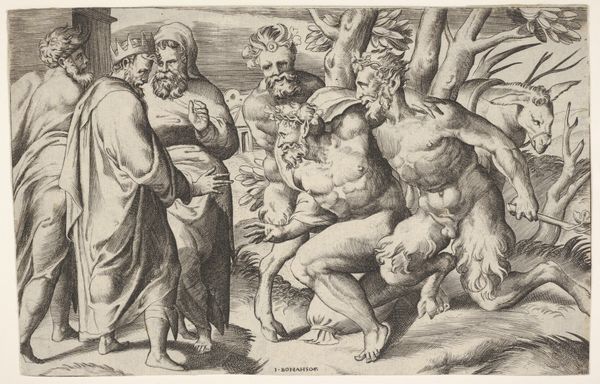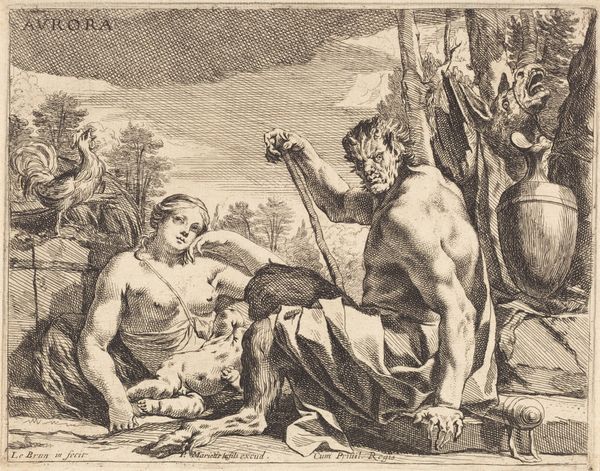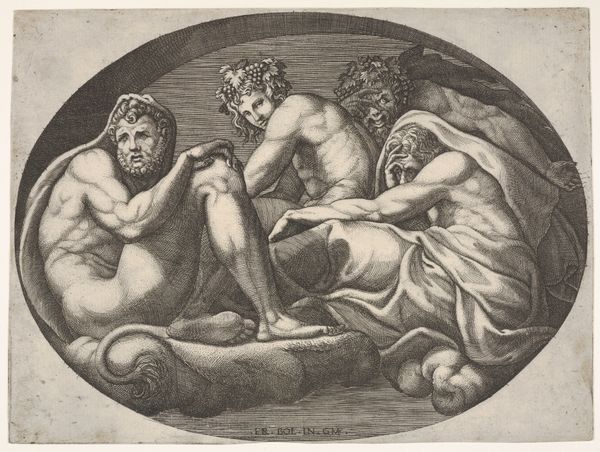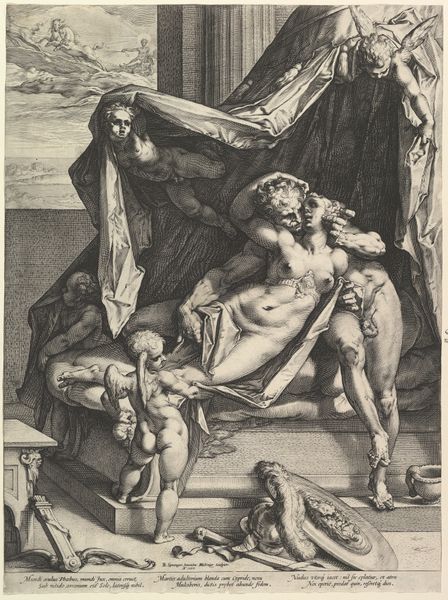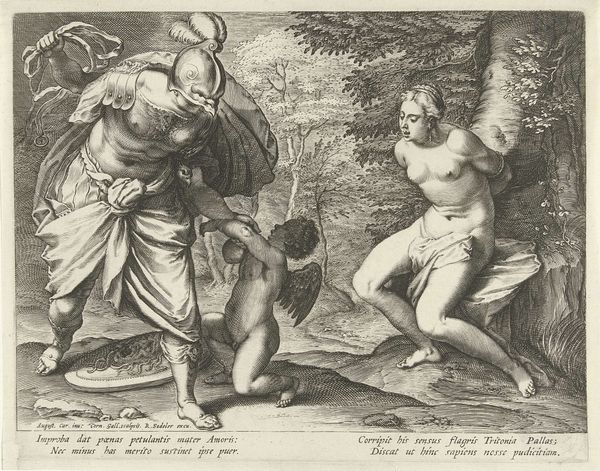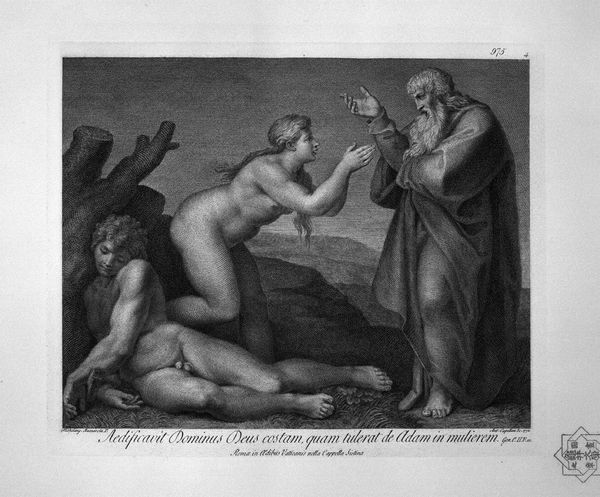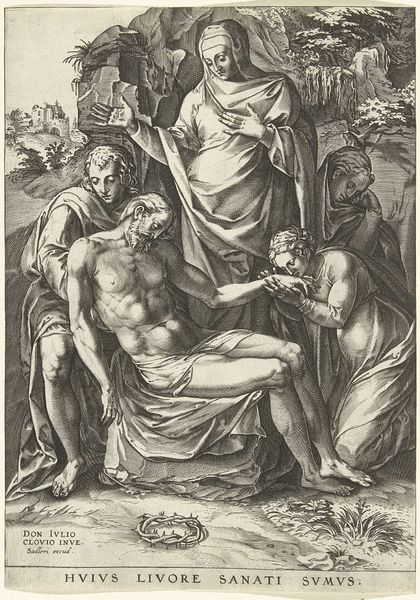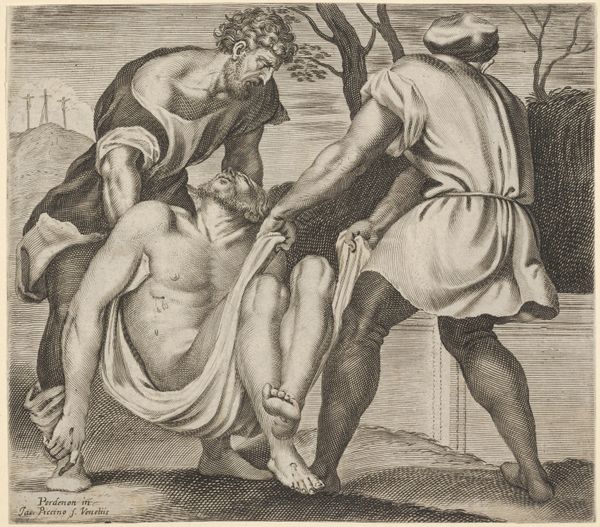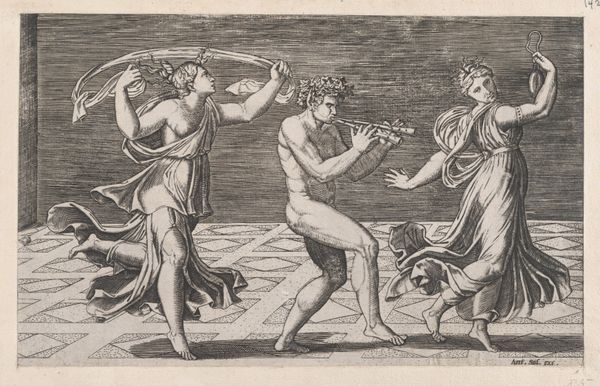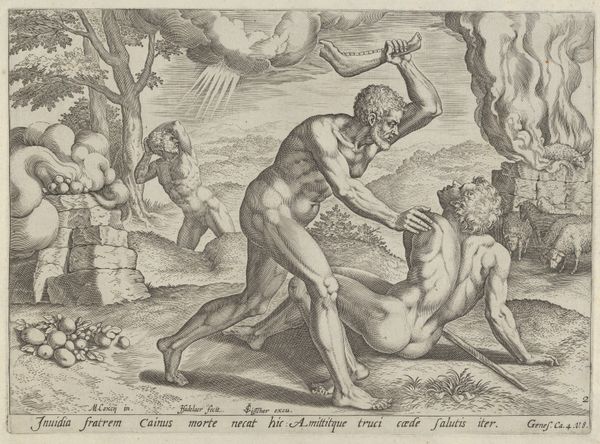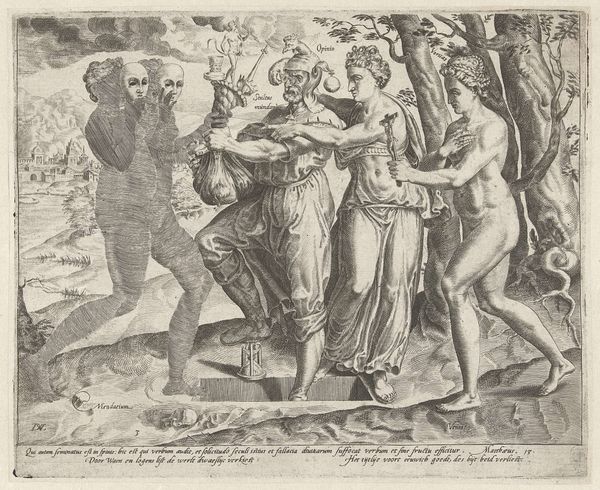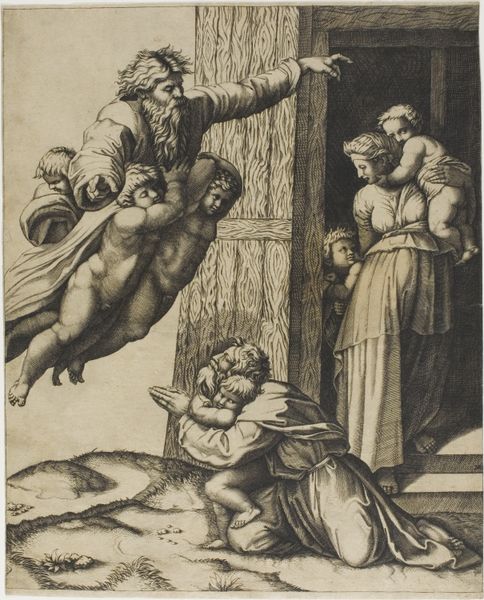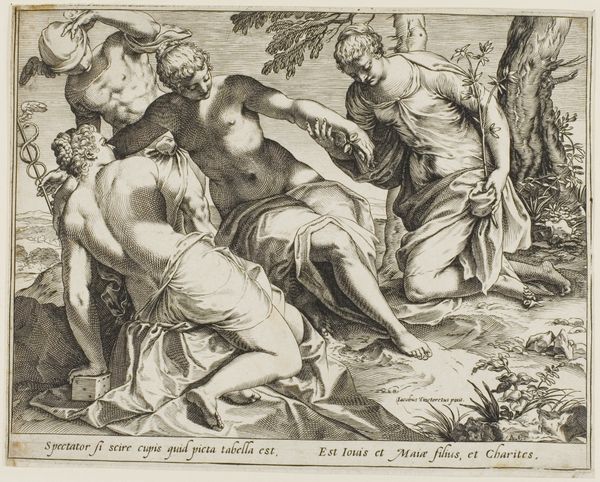
The creation of Eve who emerges from behind Adam 1525 - 1535
0:00
0:00
drawing, print, intaglio
#
drawing
# print
#
intaglio
#
figuration
#
11_renaissance
#
history-painting
#
italian-renaissance
#
nude
Dimensions: sheet: 7 5/8 x 8 7/16 in. (19.3 x 21.4 cm)
Copyright: Public Domain
Curator: Look at this intriguing intaglio print, “The Creation of Eve Who Emerges from Behind Adam,” dating back to 1525-1535. It's currently housed here at the Metropolitan Museum of Art. The artist behind this rendition is Giulio Bonasone. Editor: It has such a haunting feel. The composition, especially with the use of light and shadow, really accentuates Eve's emergence as if she's literally being born out of darkness. The detail on Adam's musculature too makes him look so serene and sculptural, even in sleep. Curator: Bonasone worked during a tumultuous period, not only within the Church, but regarding the shifting roles of patronage, the popularization of imagery through prints, and how that impacted public perception of biblical scenes like this. Printmaking made imagery far more accessible than paintings or sculpture could. Editor: Absolutely. Eve, positioned between the sleeping Adam and a commanding God, seems to embody a transitional point. It almost visualizes the transition from potential to agency. It's also compelling how God's gesture isn't forceful but appears almost like an invitation. Curator: These depictions, though biblical, often became sites where anxieties around gender, creation, and societal order were negotiated. Adam's pose as one of slumbering receptivity emphasizes the theological idea of male priority, while the emergent Eve subtly challenges the viewers about woman's autonomy. Editor: Also the symbols within: Adam nestled close to the tree -a suggestion of temptation to come; God enveloped in draping cloth- as a symbol of justice and divinity; Eve’s youthful frame expressing feminine values. The iconography feels potent and purposefully constructed to guide the observer through complex concepts. Curator: True, and analyzing the historical context allows us to appreciate the depth of Renaissance artistic discourse; how religion, artistic practice, and socio-political concerns become intricately woven into an image. Editor: Looking at it, I am just struck by the layers embedded in its visual vocabulary, how imagery speaks, transcends, and influences perception over centuries.
Comments
No comments
Be the first to comment and join the conversation on the ultimate creative platform.
